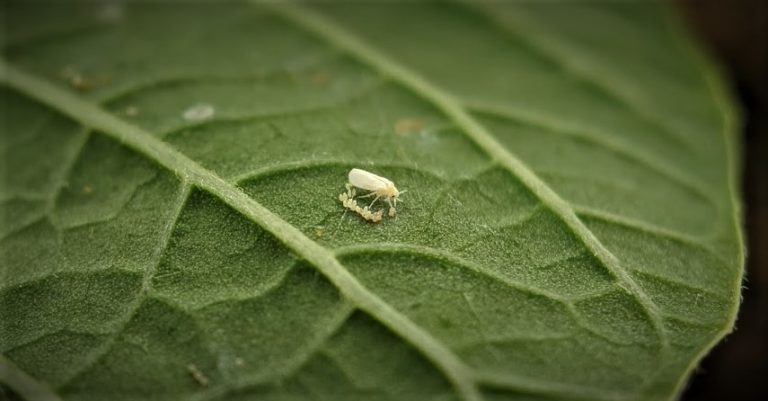Can wasps and mites control pests, protect plants in greenhouses?

A Texas A&M AgriLife entomologist is studying how a combination of beneficial insects can help control the pests in greenhouses.
Erfan Vafaie, AgriLife Extension program specialist in Integrated Pest Management, Overton, just wrapped up the second year of a three-year study looking at the use of predatory beneficial insects – mites and wasps – to control sweet potato whiteflies in commercial settings.
Vafaie’s study is for his doctorate dissertation under the supervision of Kevin Heinz, a senior professor in Texas A&M University’s Department of Entomology at College Station.
Whiteflies are sucking insect pests, similar to aphids, and can feed on hundreds of different ornamental, field and vegetable crops. Adults are winged while young whiteflies lie flat against leaves and can be difficult to see with the naked eye.
They reduce plant growth by consuming plant nutrients, he said. Whiteflies also excrete honeydew, which can lead to sooty mold. Sooty mold will not directly hurt the plant but can reduce plant aesthetics; the most important characteristic for retailing ornamental plants. Left unchecked, whitefly populations can overwhelm and cause mortality to many plants, including poinsettias.
Vafaie said ornamental crops, like poinsettias, are especially vulnerable to decreased marketability and ultimately loss in value from appearance of whiteflies and their feeding. Growers are often aggressively proactive with chemical spray treatments to ensure their poinsettias will meet market demands.
“They’re protective of their crop,” he said. “But the potential for using a combination of biological controls to address a suite of harmful insects instead of conventional chemical controls is something growers are interested in and want to learn more about. I think there are a number of potential benefits to using beneficial insects in commercial settings.”
Vafaie said there are many questions about pesticide efficacy, pest resistance to certain chemicals, increased pesticide applicator regulations and the overall cost of using pesticides. Consumer trends also show they want ornamentals to have limited-to-no exposure to pesticides.
Using beneficial insects to control pests and minimize damage to crops could be an important aspect of sustainable production, he said. There are numerous studies showing the effectiveness of using beneficial insects in commercial settings in more temperate climates, especially in fruit and vegetable production, but very little information about how they manage pests of ornamentals in hot, humid areas like East Texas.
Previous studies have tended to focus on the use of a single beneficial insect, such as a parasitic wasp, he said.
“The goal is to determine whether the combination of two beneficial insect species to manage whiteflies can work better than just one for poinsettias in a greenhouse environment,” he said. “I want to know how the wasp and mite work together to suppress whiteflies.”

